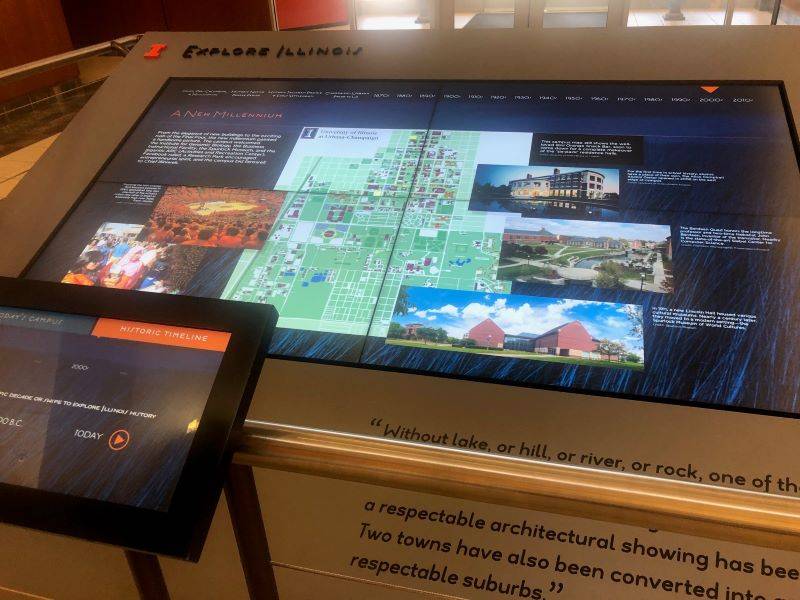Whether you are a current or former Illini, or perhaps just a townie with an affection for the University, you need to carve out an hour (or five) to visit the Richmond Family Welcome Gallery. It’s located in the Alice Campbell Alumni Center, and it is an immersive and interactive journey through all things Illini, past and present. It has become a starting point for prospective students making campus visits, to give them a taste of the University of Illinois experience, but it exists for anyone who wants to dig into all aspects of the institution and the culture that surrounds it.
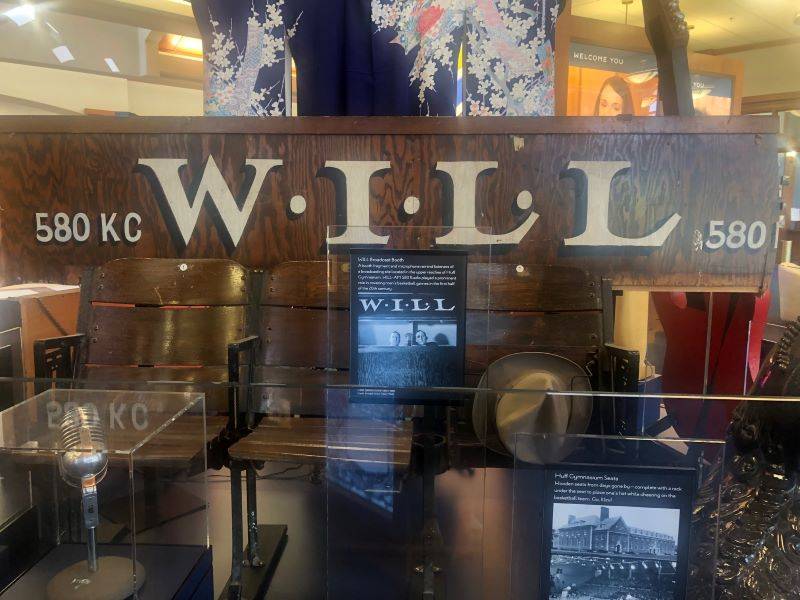
I took a little tour this week with Ryan Ross, Assistant Director of History and Traditions Programs for the University of Illinois Alumni Alliance, and curator of the Welcome Gallery. The gallery is a combination of artifacts, photographic and interactive digital displays, and oral histories.
The Richmond name refers to Jack and Marjorie Richmond. Jack was an alumnus, and the couple had previously donated funds for the studio at WILL and the bell tower at the courthouse. “We received an estate gift after Marjorie passed away,” says Ross, “We were in the thick of it (creating the gallery) and that estate gift paid for the whole thing.”
It opened in October of 2018, and it came together beginning in 2013 with a team that several players. RhodesWorks Ltd., literally a Mom and Pop local operation owned by Ralph and Cathy Rhodes, created the overall design. A company out of Boston did the media programming, another out of Grand Rapids built the cases. From there, a working group of retired administrators and people from the archives along with Ross, who was hired specifically to oversee the project and content development, took on the task of deciding what should go in the gallery. Post-opening, this is Ross’s gig. He’s the one doing everything from updating and rotating the interviews and artifacts to proofreading text to cleaning the labels in the displays.
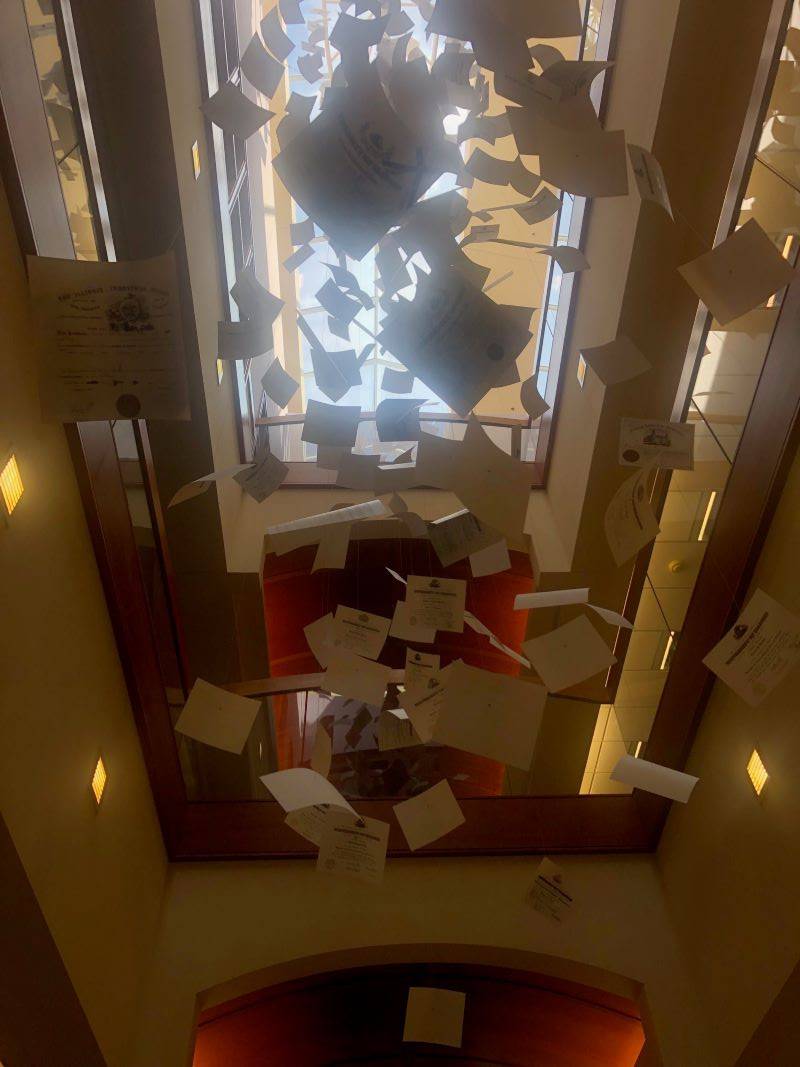
Before you even enter into the gallery, there are striking visual displays that draw your attention. Look up and you’ll see a mobile of replicas of University of Illinois diplomas, dating from the days of Illinois Industrial University to 2018, from all different colleges and marking the completion of various degrees.
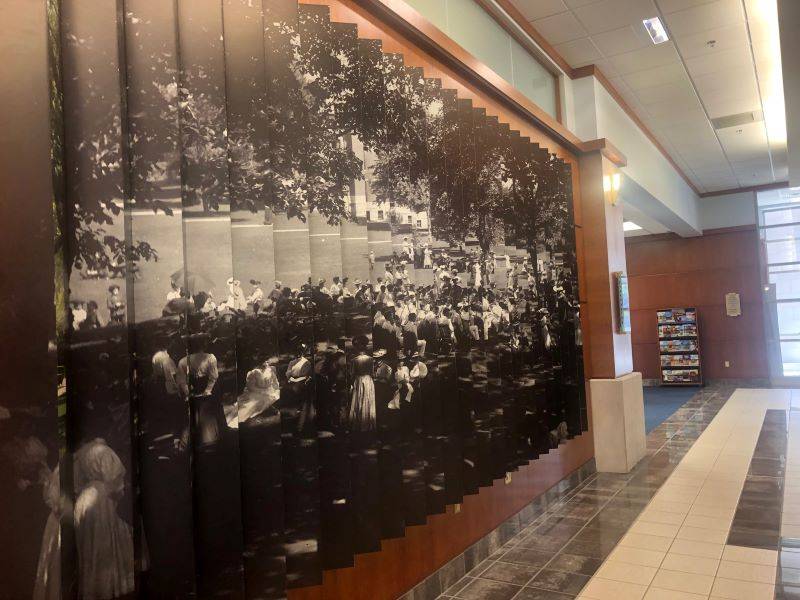
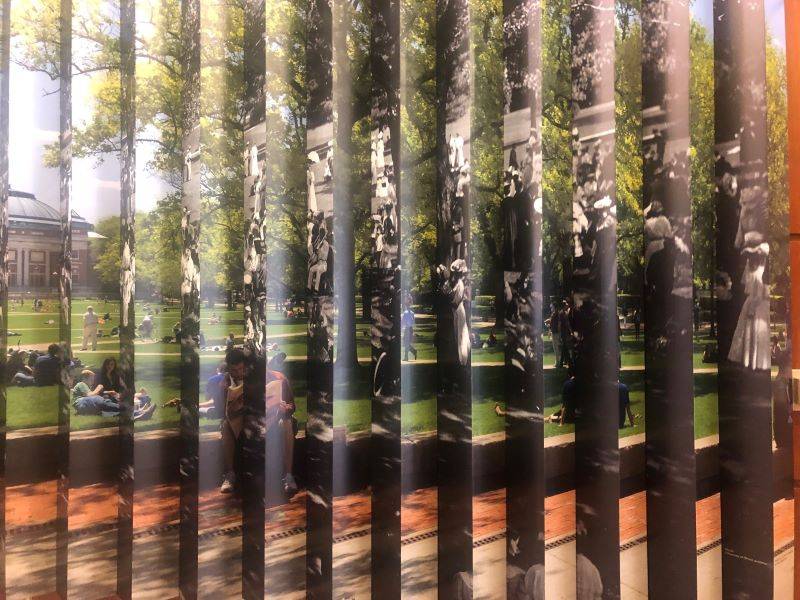
Turn to your right, and there’s a lenticular mural where you can move through time just by walking to one end or the other. One “side” of the mural depicts a band concert on the Quad from the early 20th century, the other a typical sunny afternoon in the same spot 100 years later.
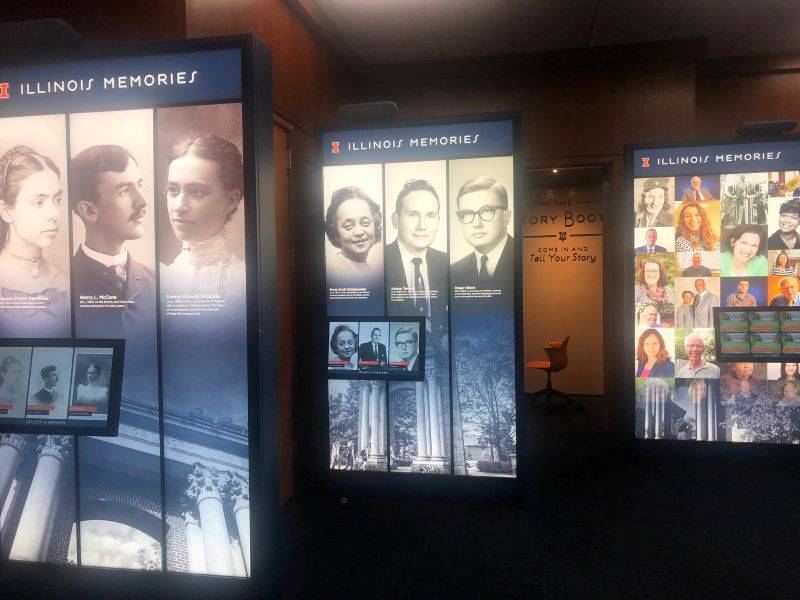
To hear from University of Illinois students in their own words, spend some time exploring the compilation of oral histories. There are 12 longer stories from the early years — beginning with Frances Potter Reynolds, one of the first women to graduate from the U of I — through the present and several in between, including Roger Ebert and Record Service founder Phil Strang. Ross wanted to “represent many different types of stories, educational and cultural backgrounds, from a variety of time periods.” He says, “These stories came from a mixture of sources. The early ones we took letters and diaries and turned them into scripts, then voice actors recorded them…the others are telling stories in their own words.” They brought in recordings from sources such as the Student Life and Culture archives, WILL, and The Daily Illini to round out the exhibit. You can interact with each panel, using the touch screens to hear what each student, past or present, had to say about the experience here.
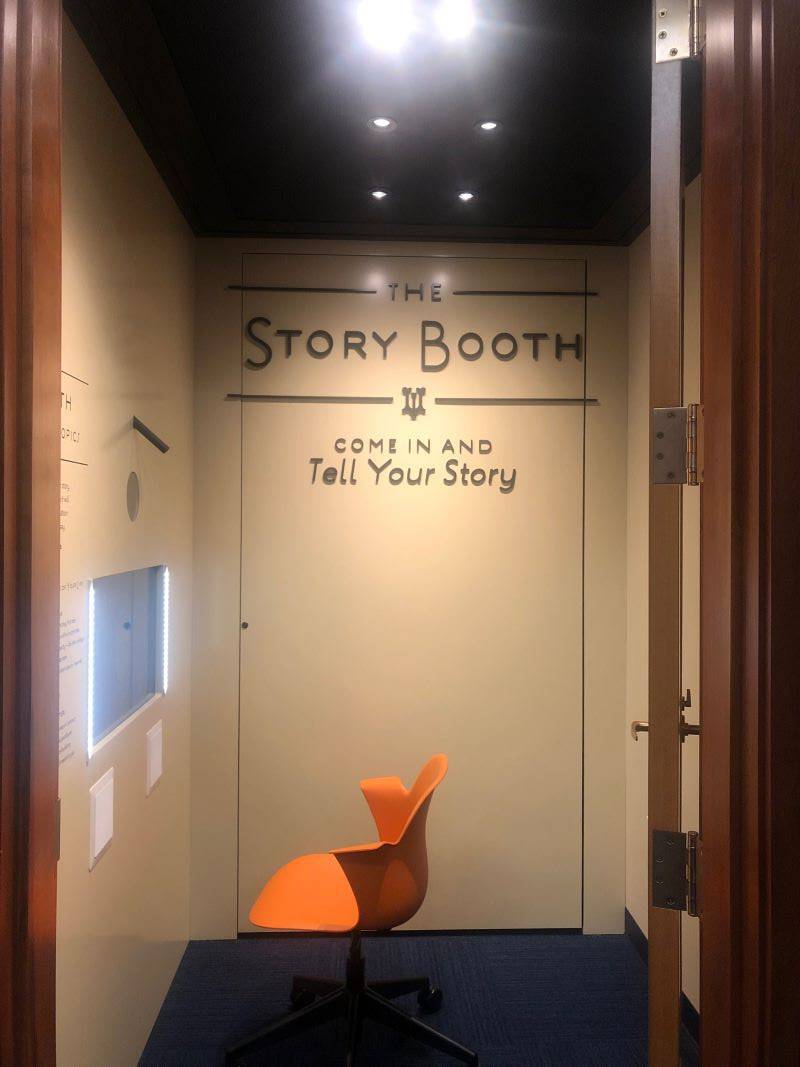
There is also a display with shorter, 90 second clips that various students and alumni have recorded in the gallery’s sound booth. The booth is open to anyone who wants to share something about their University of Illinois experience, then Ross reviews them and adds them to the rotation when appropriate.
At the opposite end of the gallery, you’ll find an interactive map and timeline (shown in the top photo) that covers the first inhabitants of the region, through the founding of the university and beyond, looking at the changing face of the campus decade by decade. The map allows prospective students to explore the layout out campus buildings, and even get walking directions to their next location.
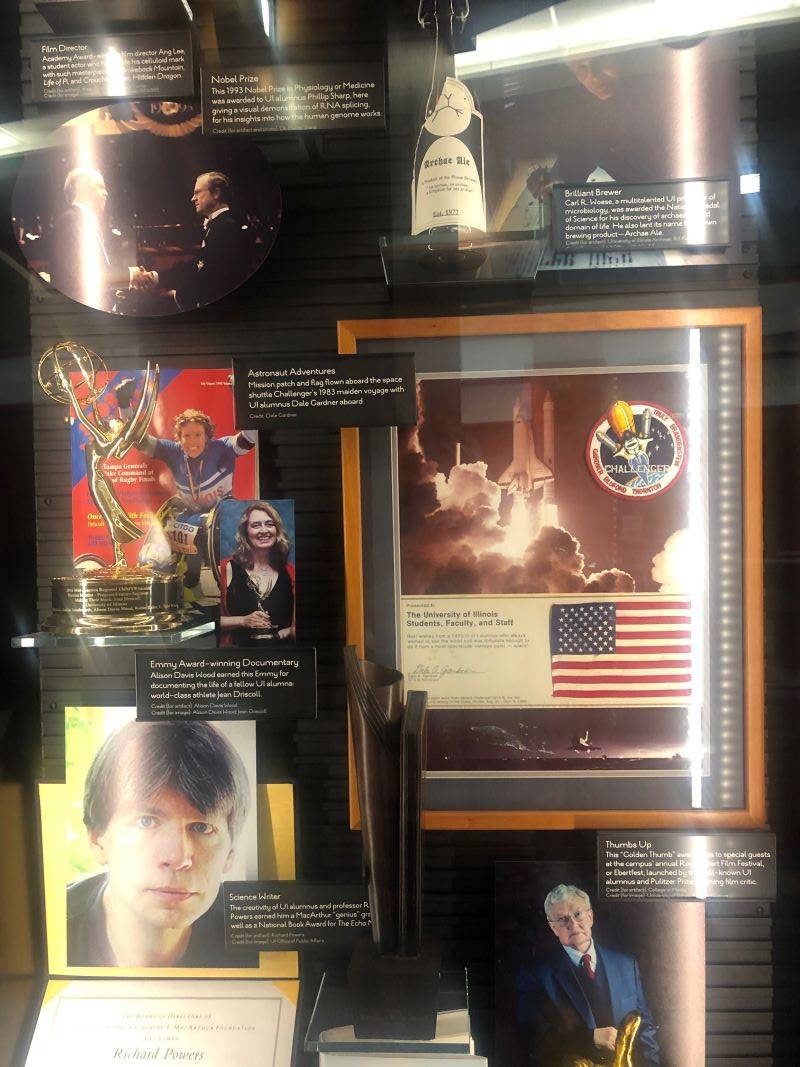
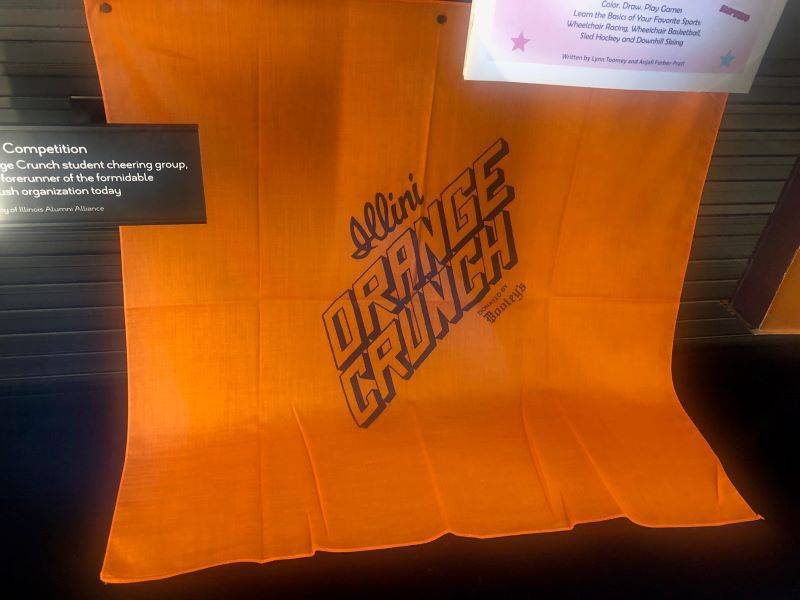
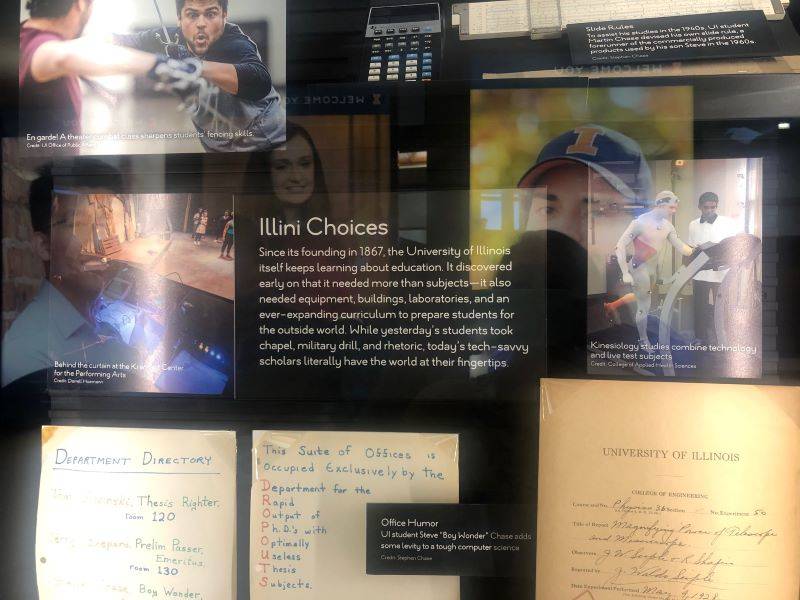
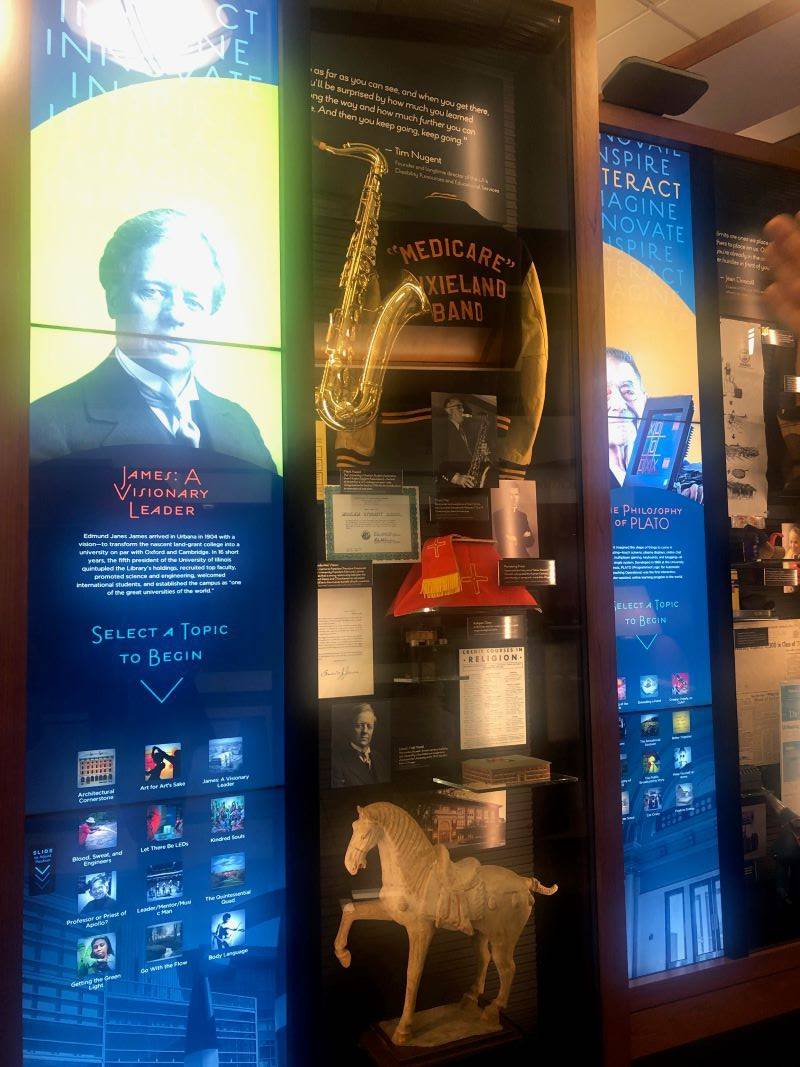
As you venture into the main portion of the gallery, you’ll find several “discovery boxes” that showcase collection of artifacts alongside interactive media components. Some hold items that fall under broad categories such as “inspire” and “innovate” while others are more specific, focusing in on student life, music, or sports. These offer the opportunity to deep dive into all of the U of I nostalgia, and recognize the depth and breadth of all that happens here. According to Ross, a majority of the items in the boxes are on loan from campus units, such as Krannert Art Museum (notice the 1200 year old horse from the museum’s Asian art collection). “To get the word out about what we were doing I worked closely with campus units and since we’ve opened I work closely with them to develop new topics.”
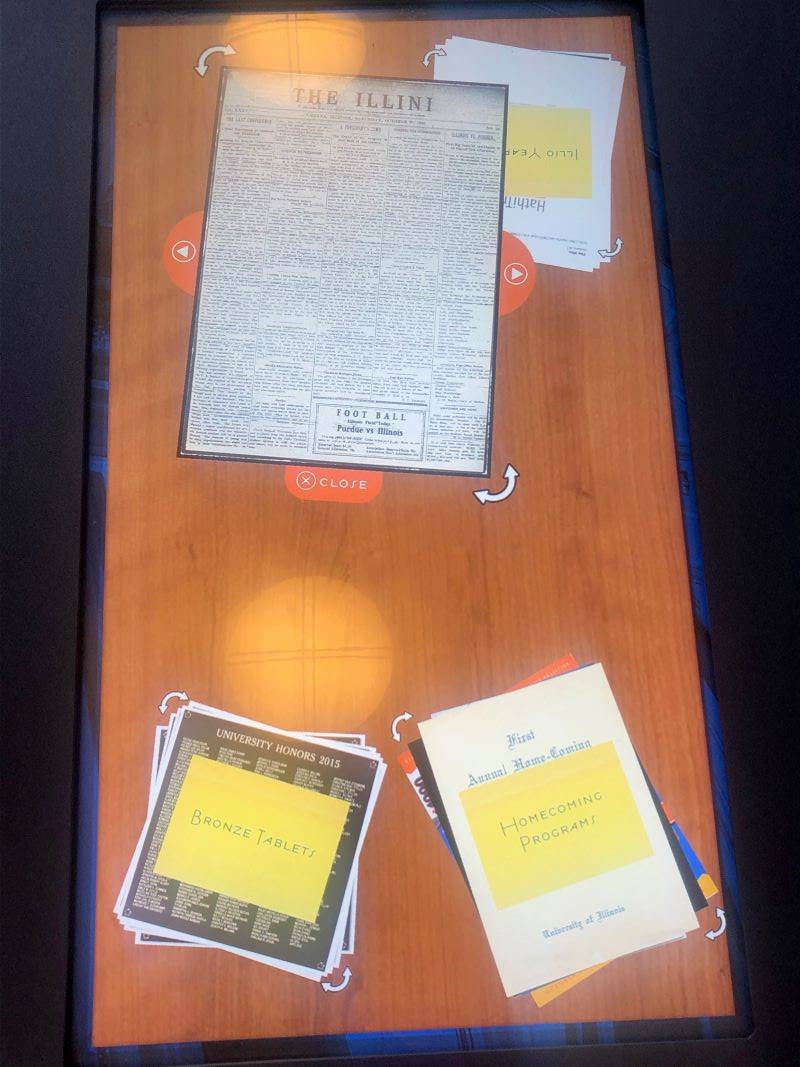
Don’t leave without grabbing a free cup of coffee and sitting at one of the touch screen tables where you can check out issues of the Daily Illini, volumes of the Illio yearbook, homecoming programs, and Bronze Tablet winners. Then turn your attention to the Hangouts and Watering Holes wall, which Ross says is a popular display. I mean, obviously right? Don’t we all have a lot of feelings about the places we were eating and drinking while in college?
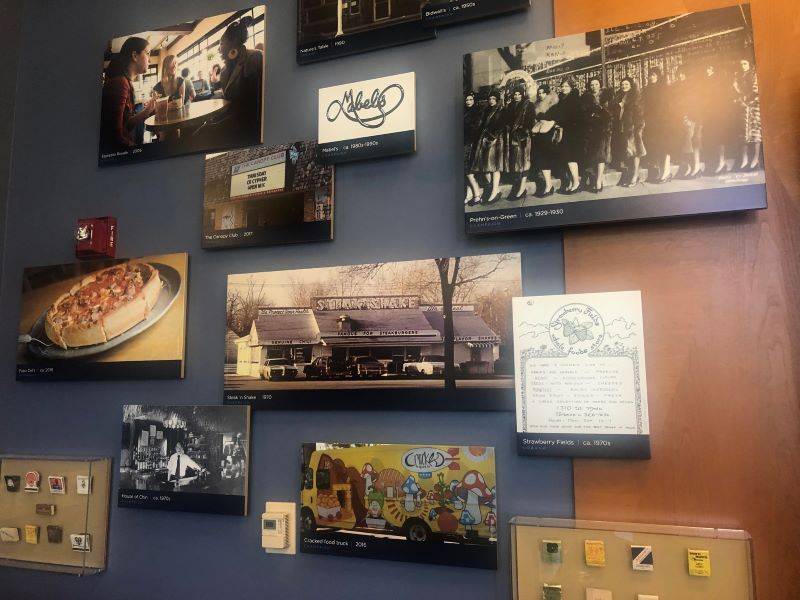
Need more of a sneak peek before you devote your time? Peruse their website. You can view a selection of videos and find detailed descriptions of each aspect of the gallery.
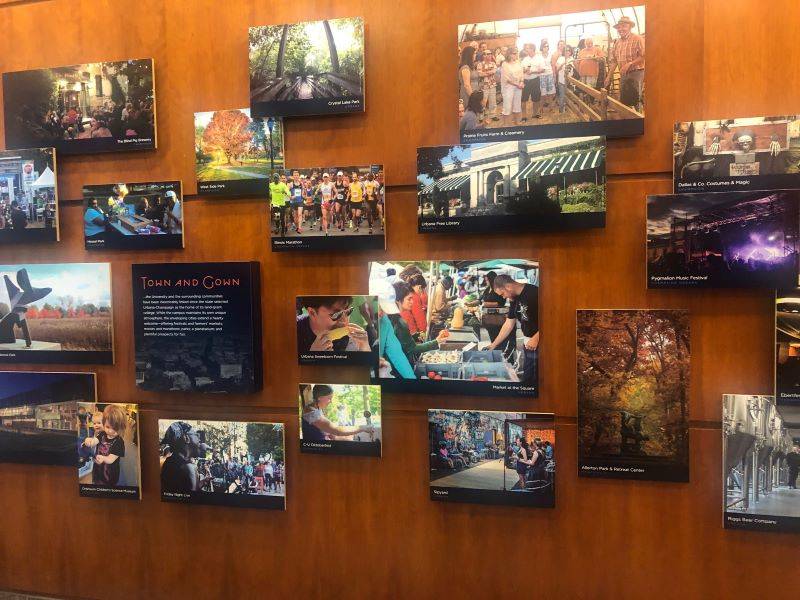
As someone who was once a part of the “gown” community and has now long been part of the “town” I often take for granted the impact the University of Illinois has here and around the world. I shrink it into the boxes of my 4-year undergrad career and this entity that I now reap the benefits from (availbility of cultural entertainment and sporting events) and complain about (my god why can’t these youngsters just look up and see a car coming) without fully appreciating the great people, innovations, music, and more that come out of the institution. A stroll through the Welcome Gallery was a good reminder.
Photos by Julie McClure








